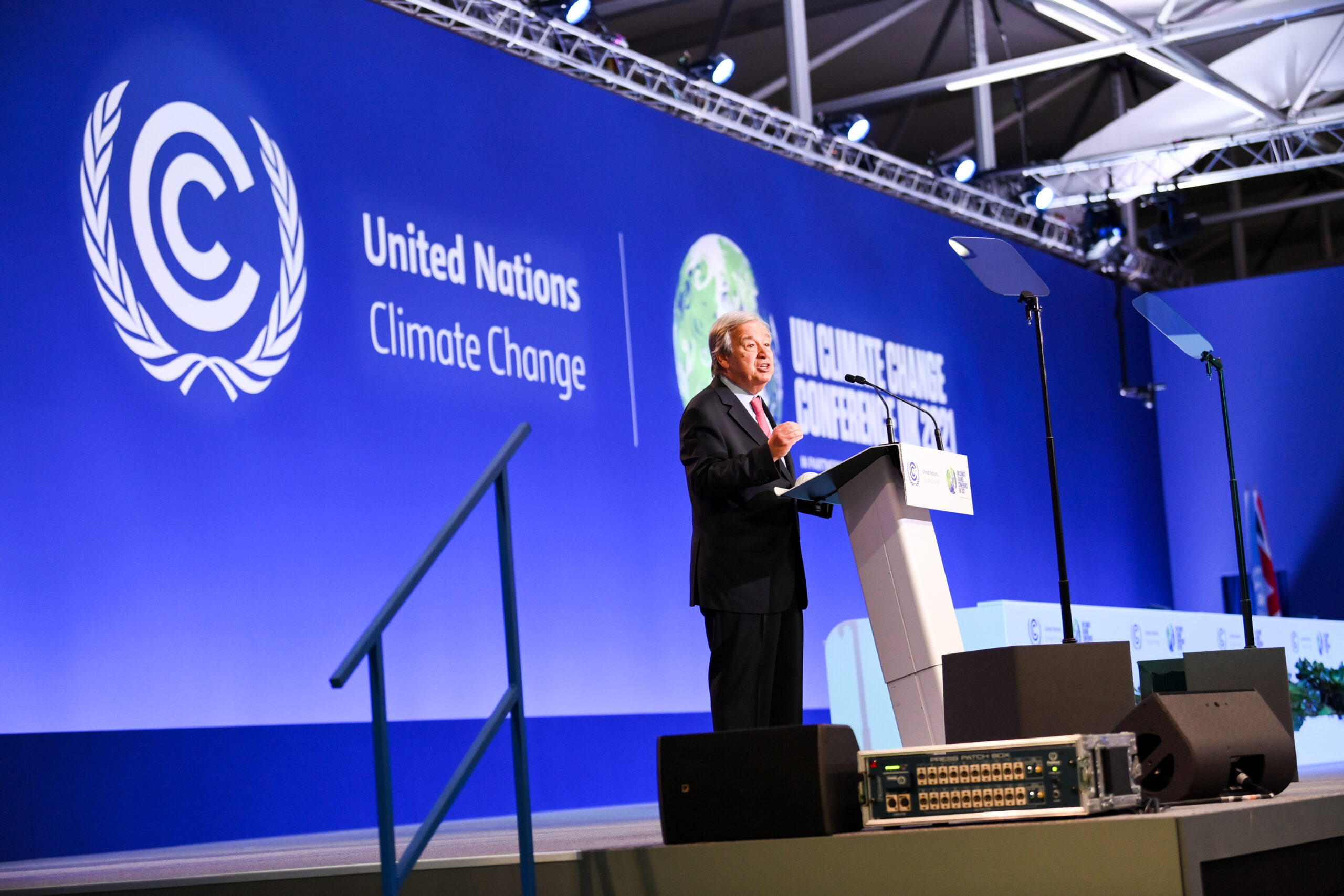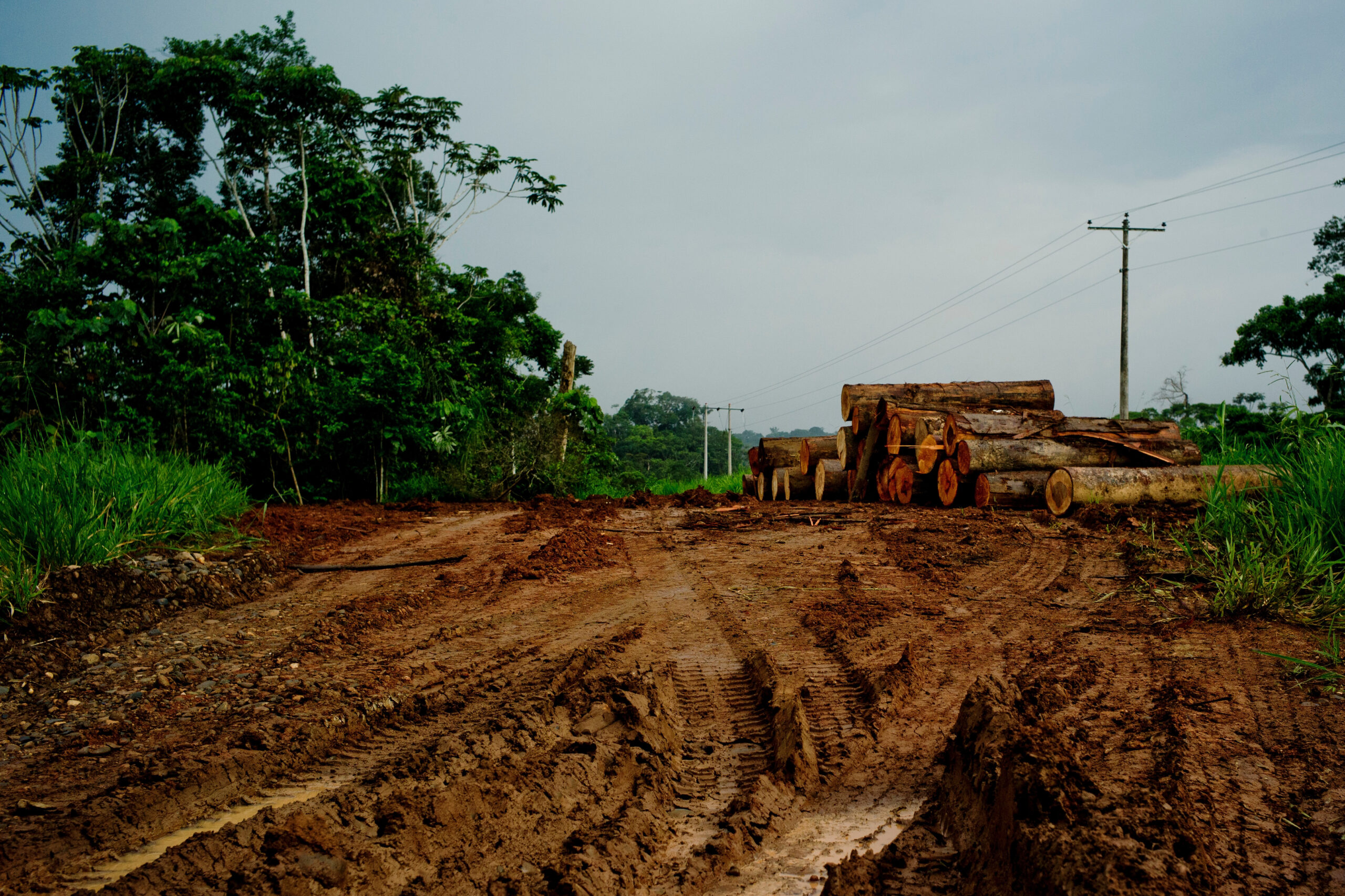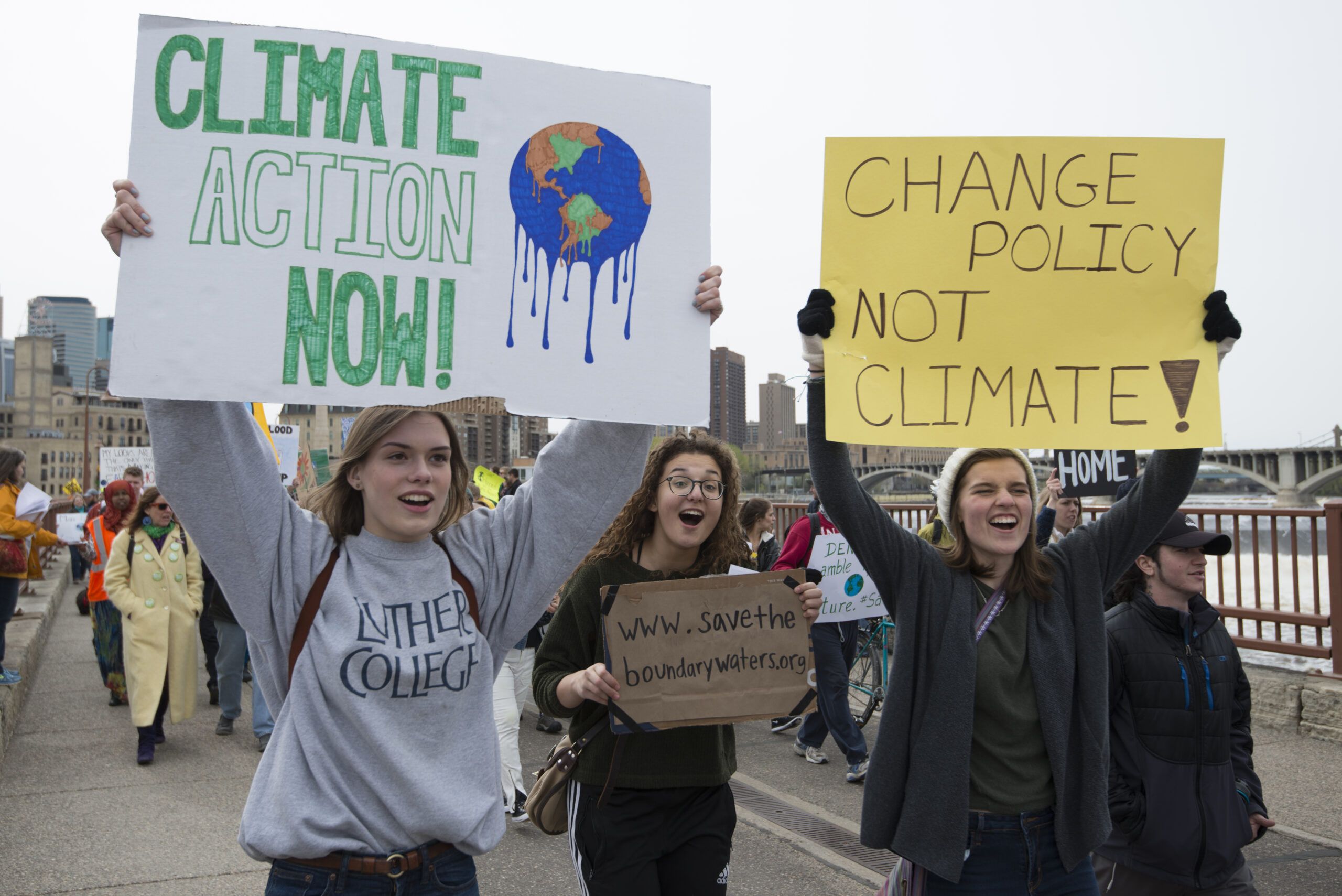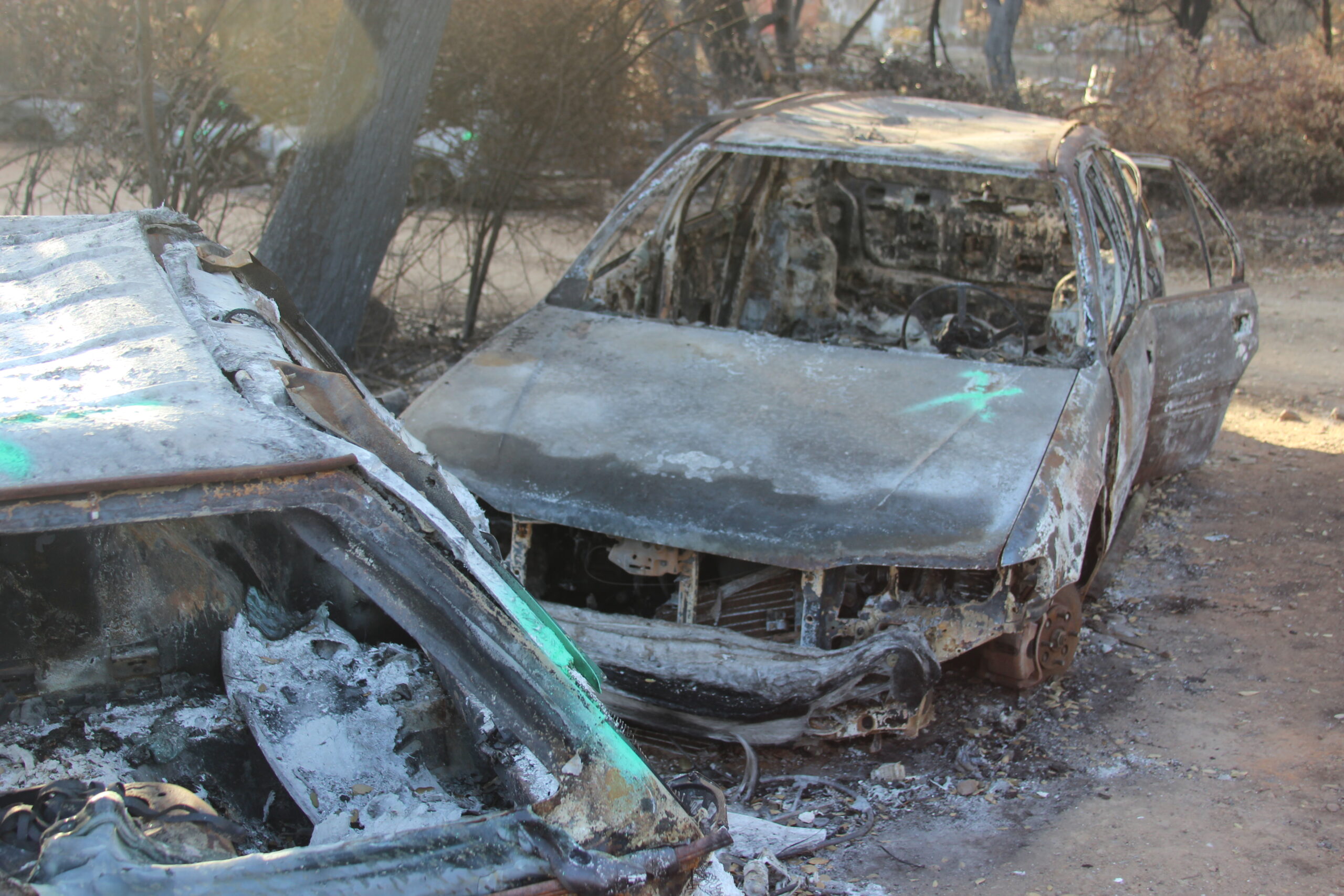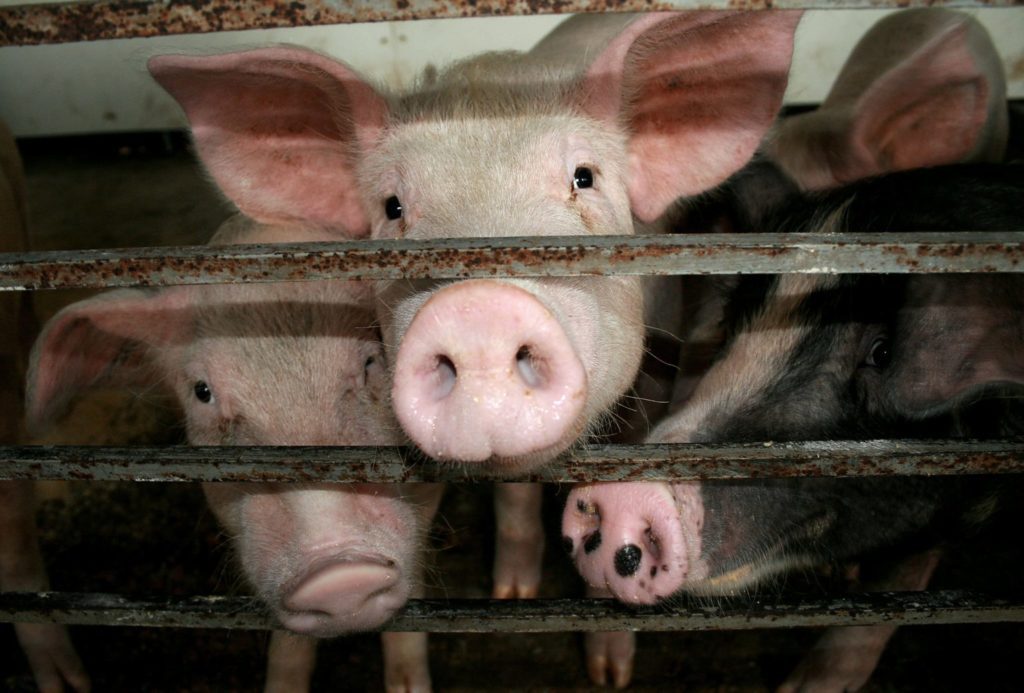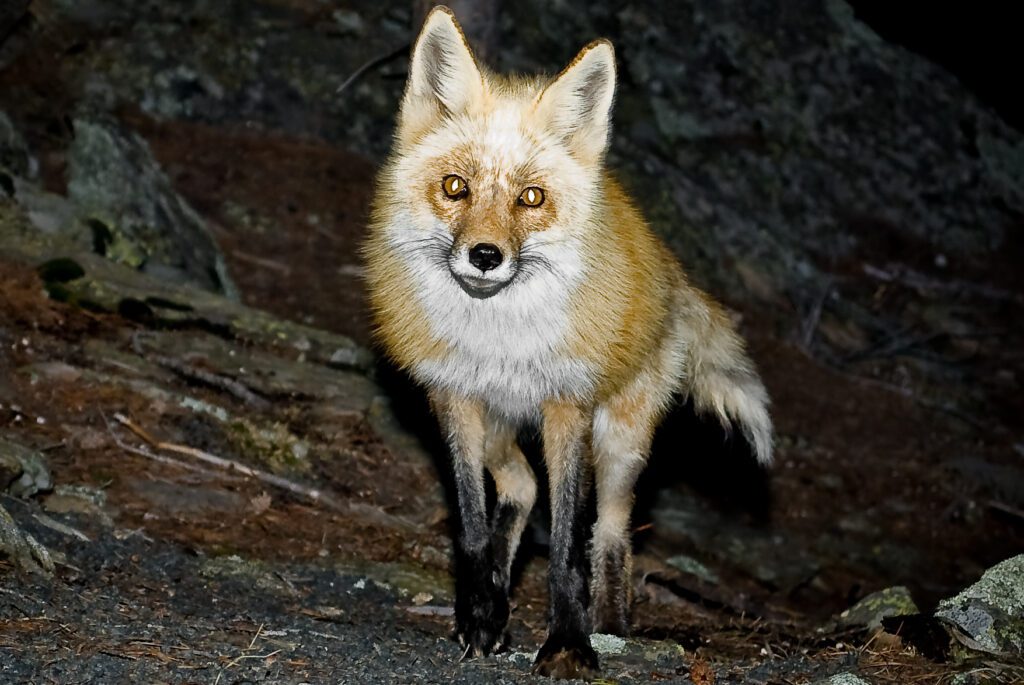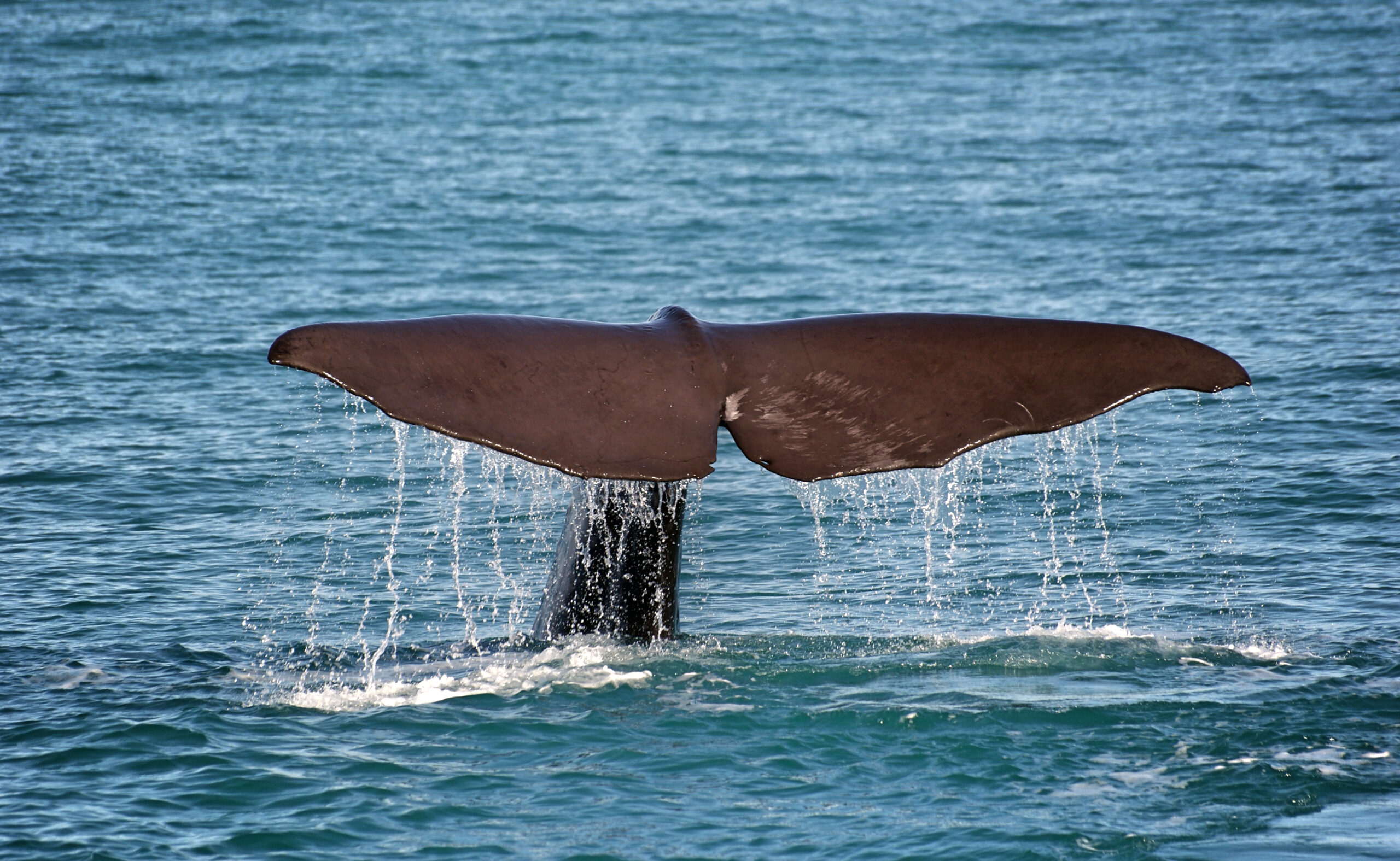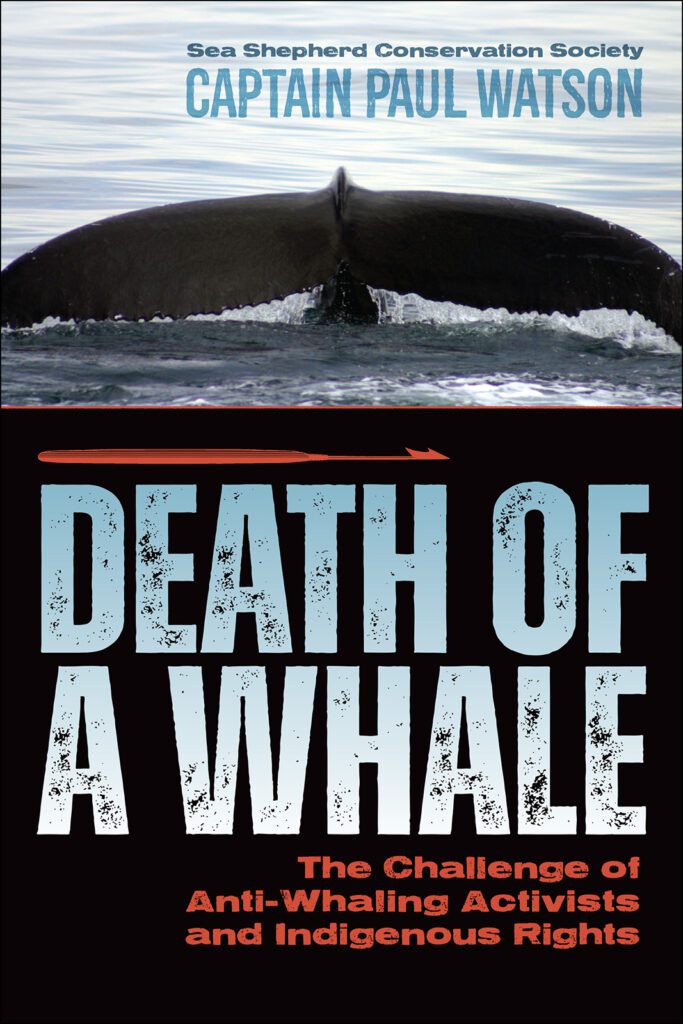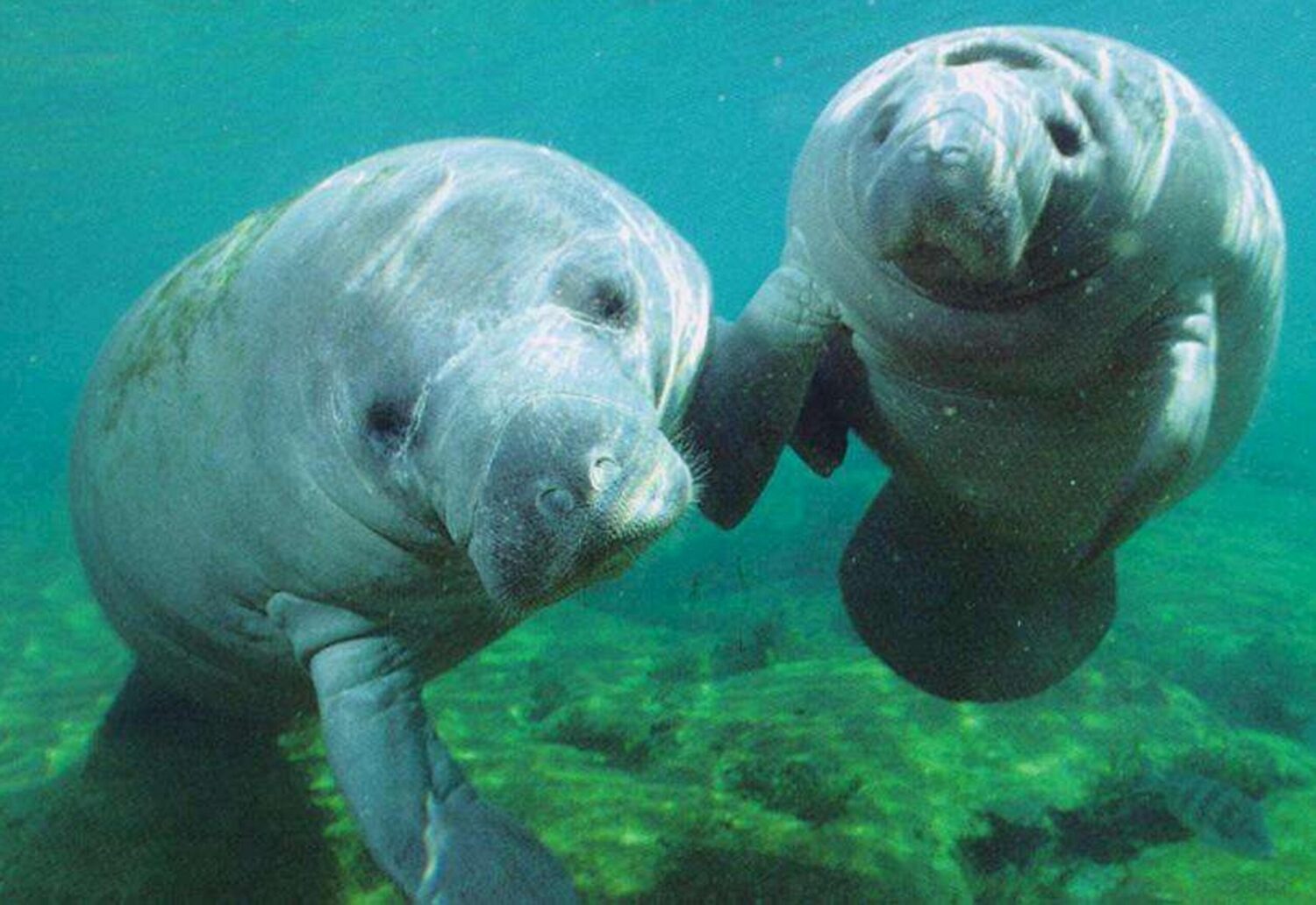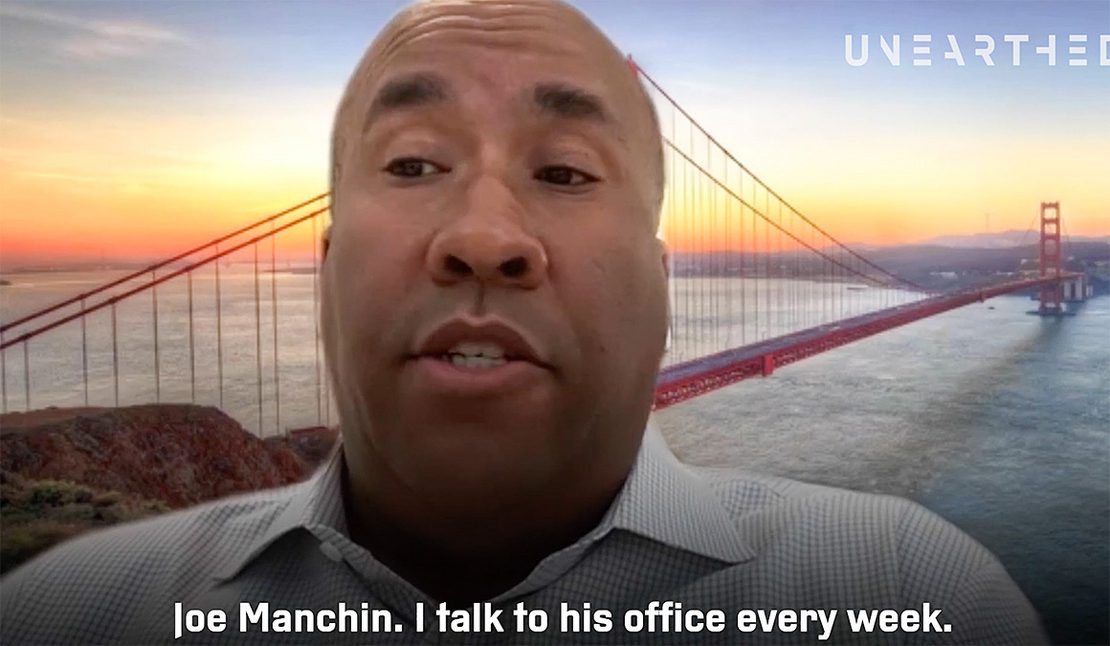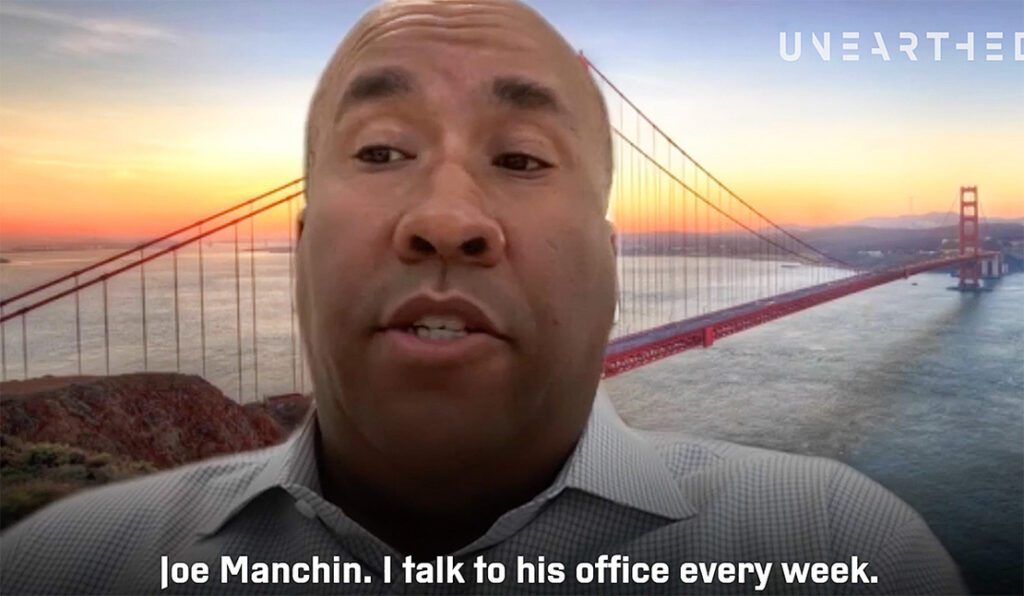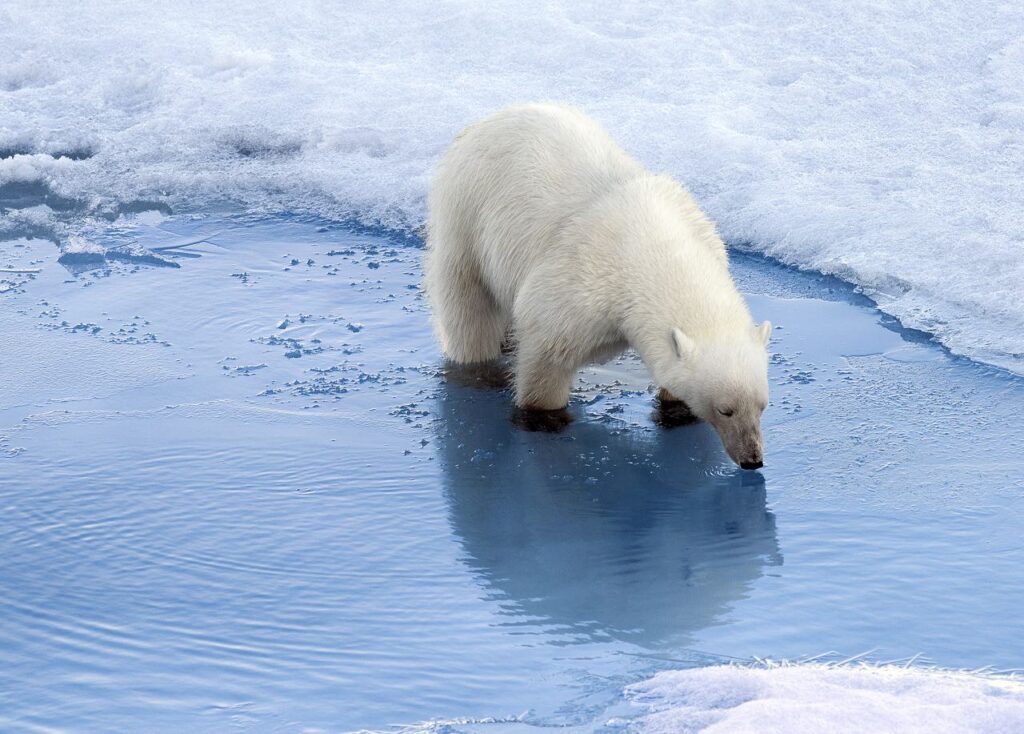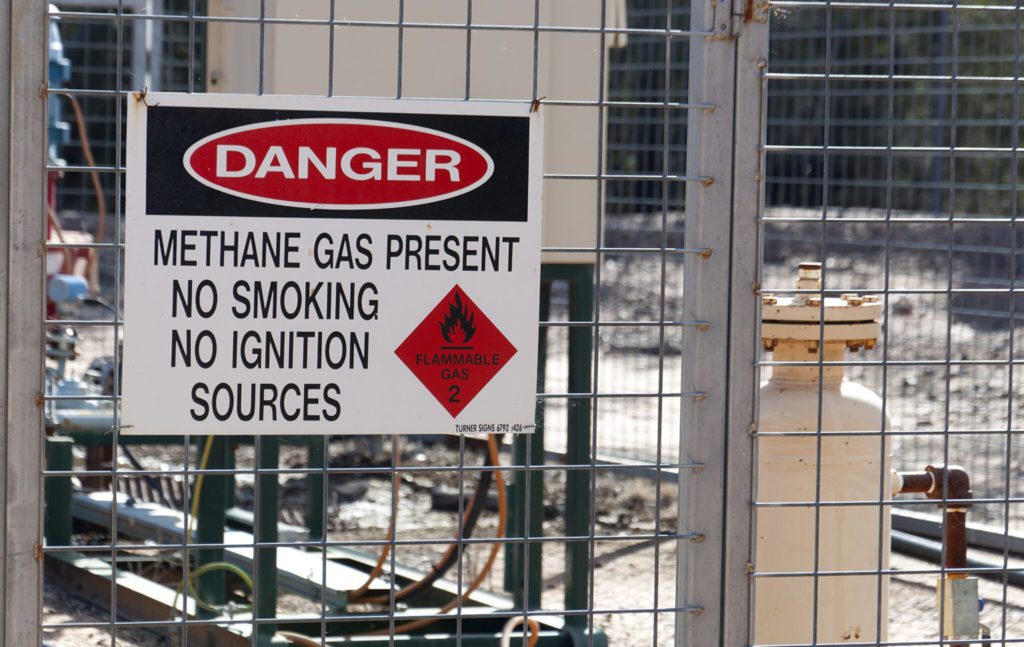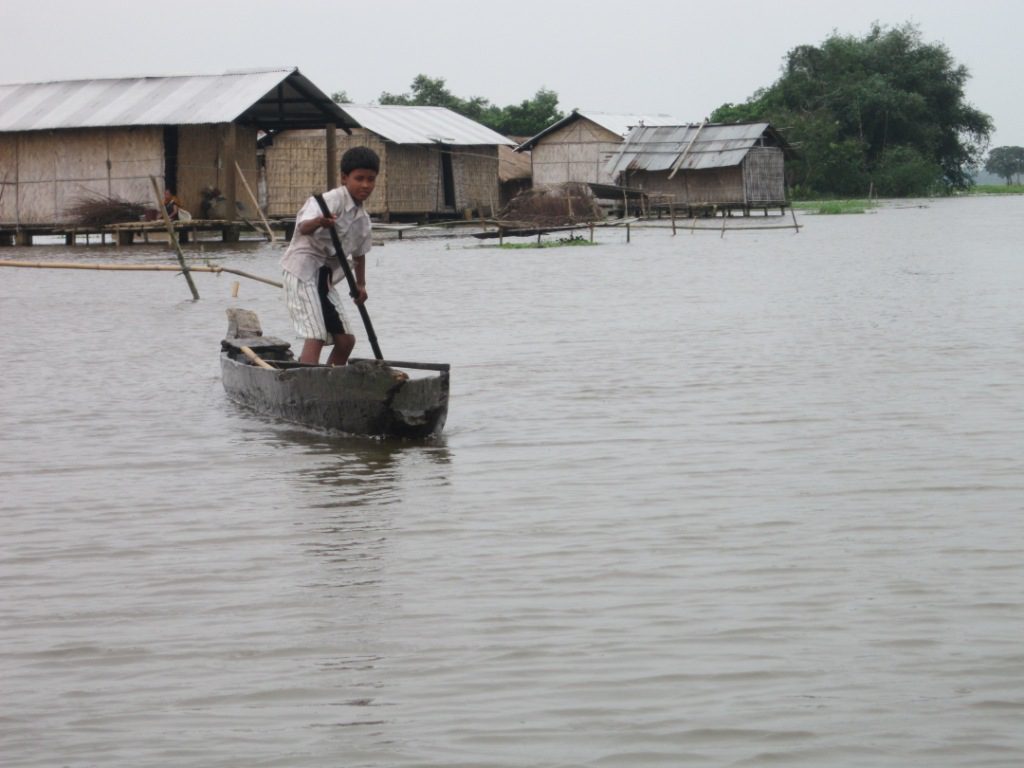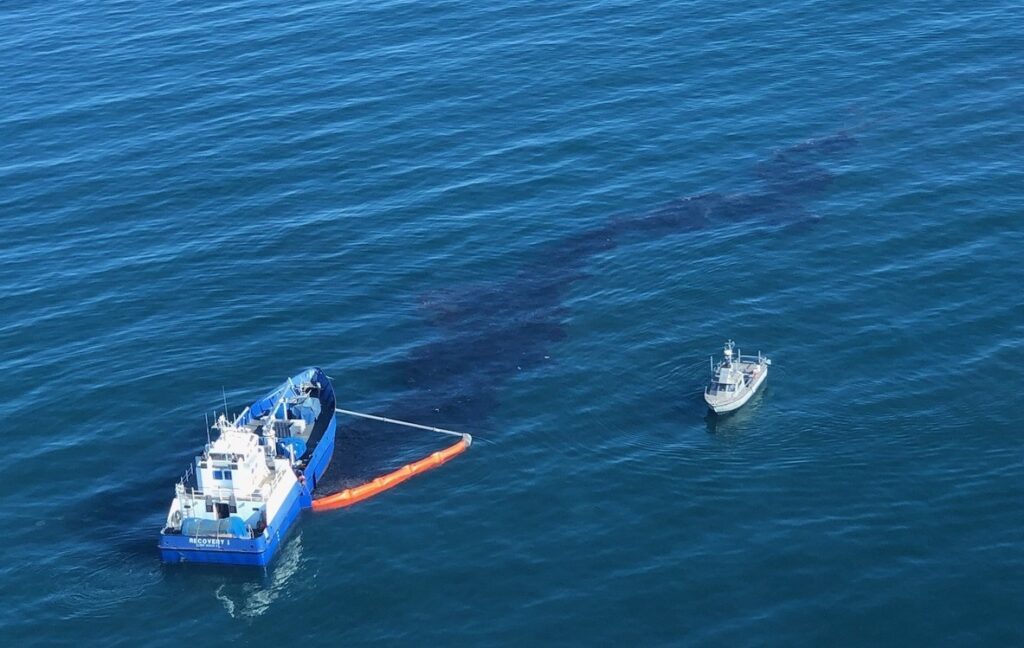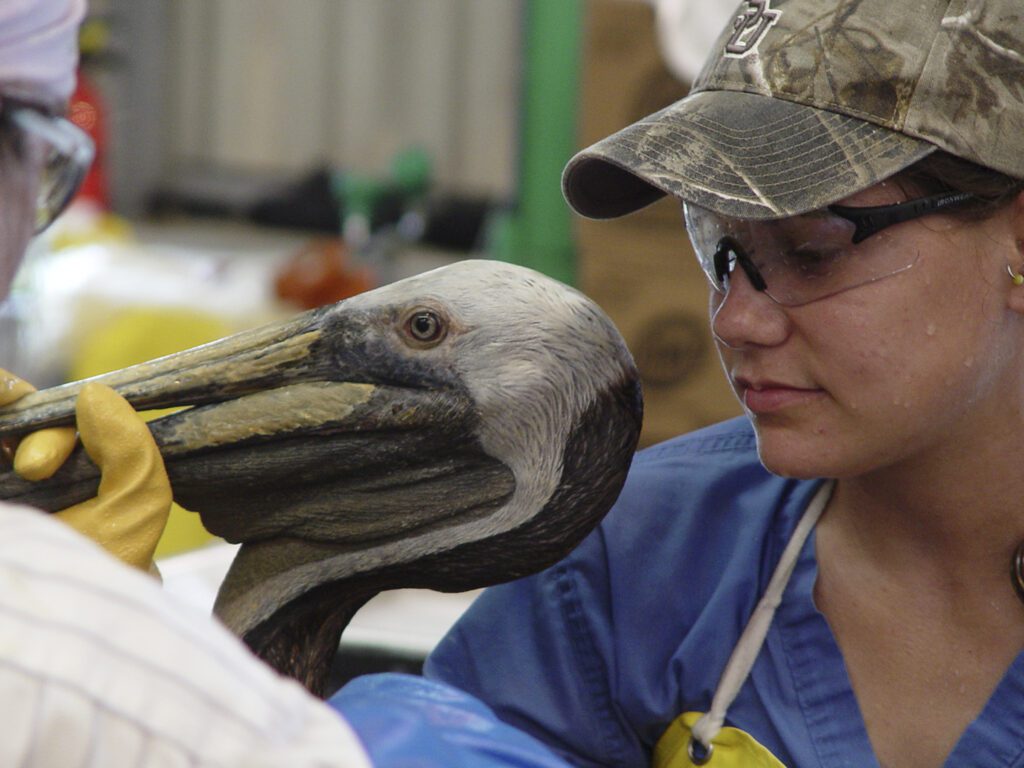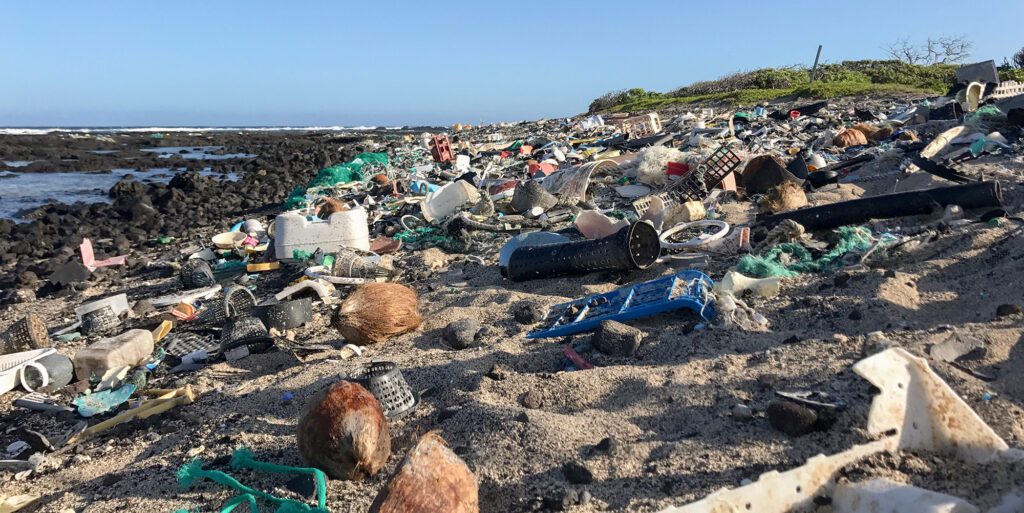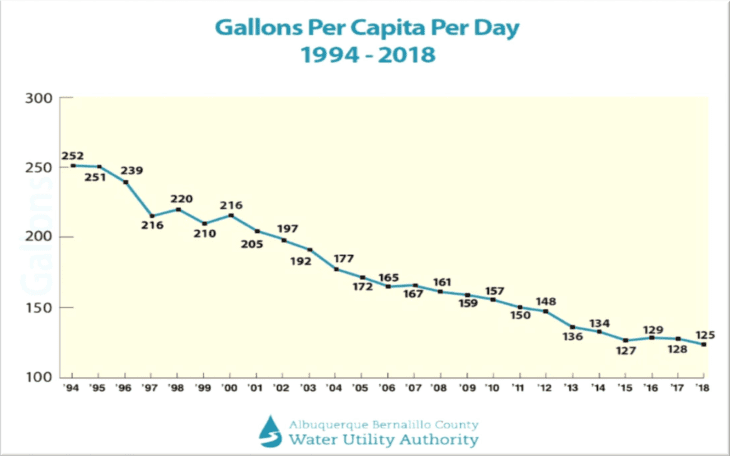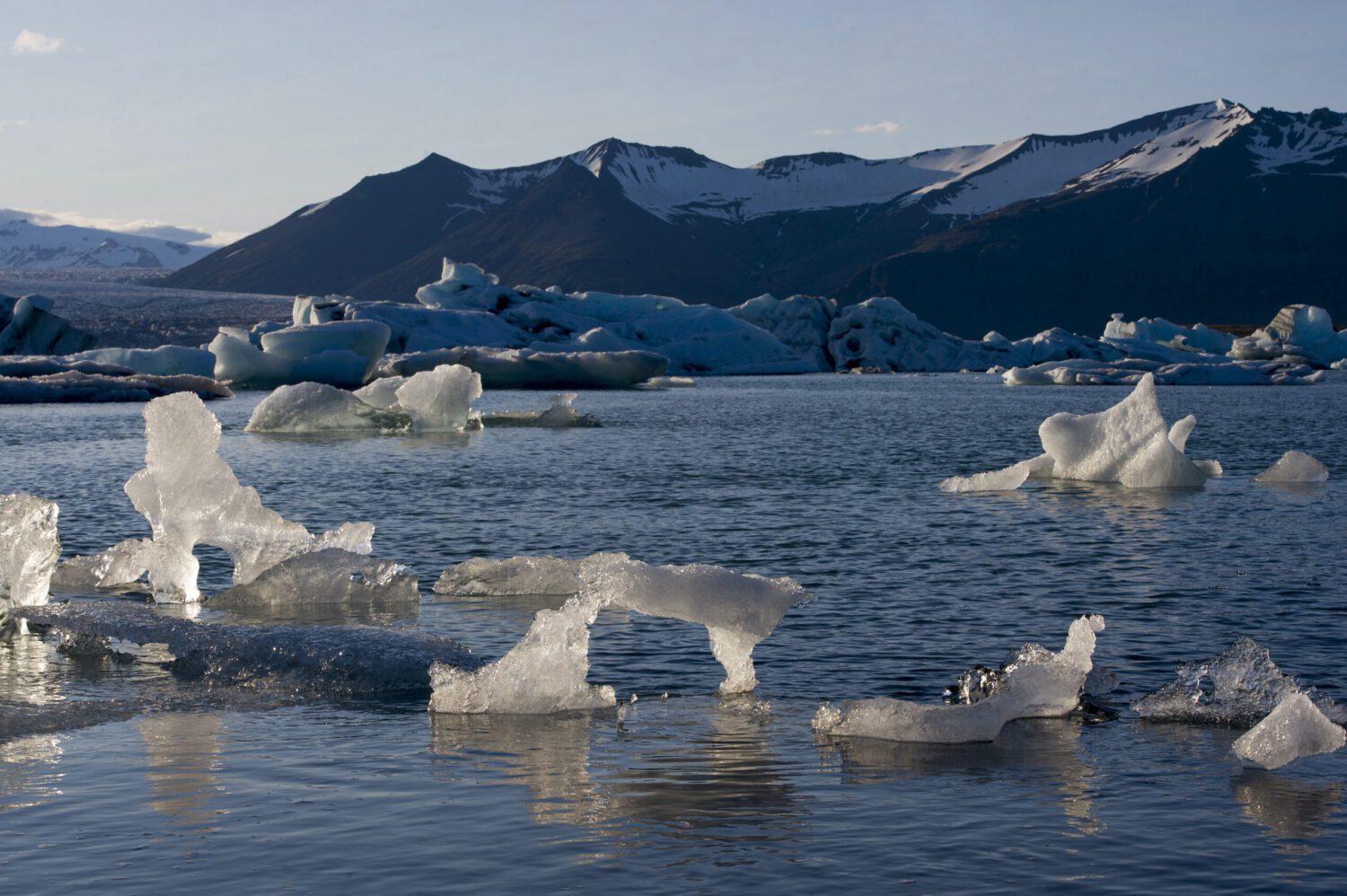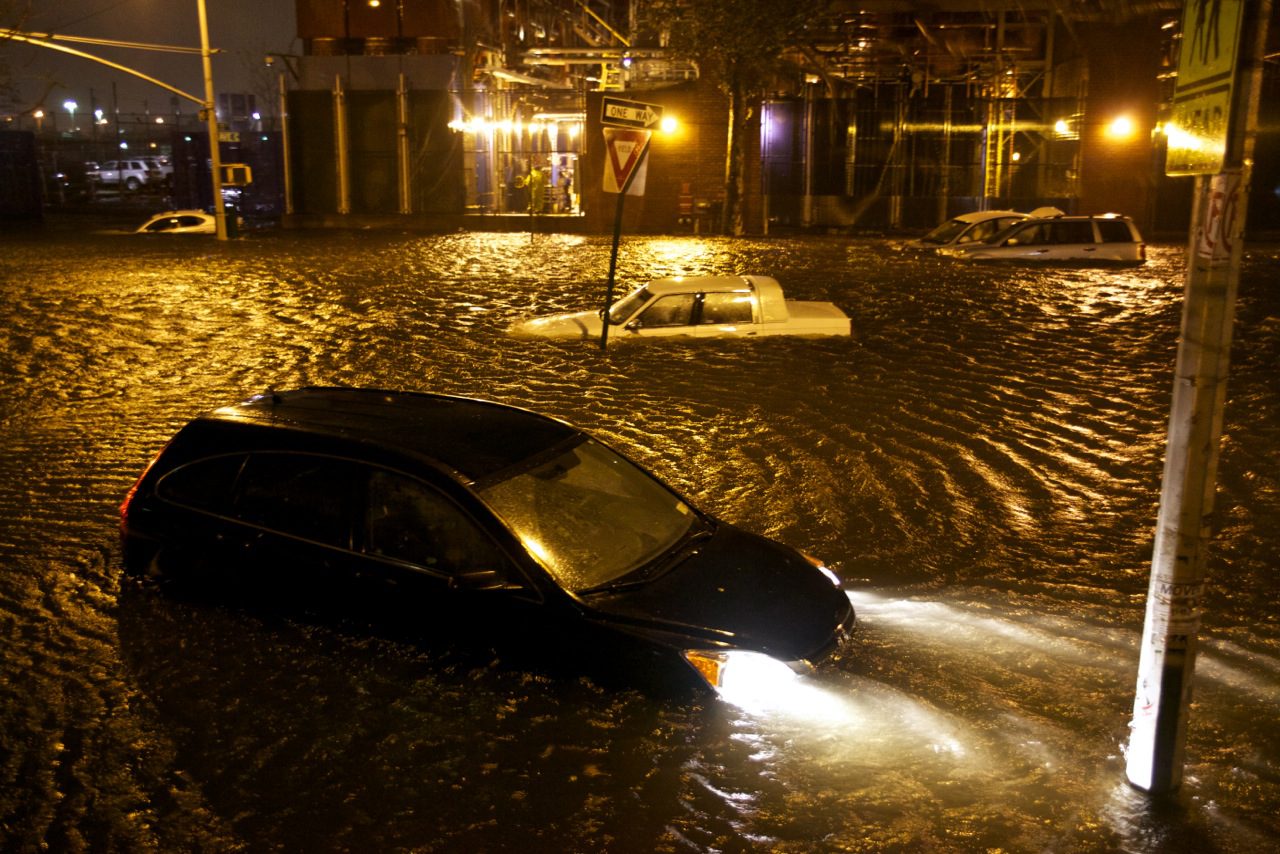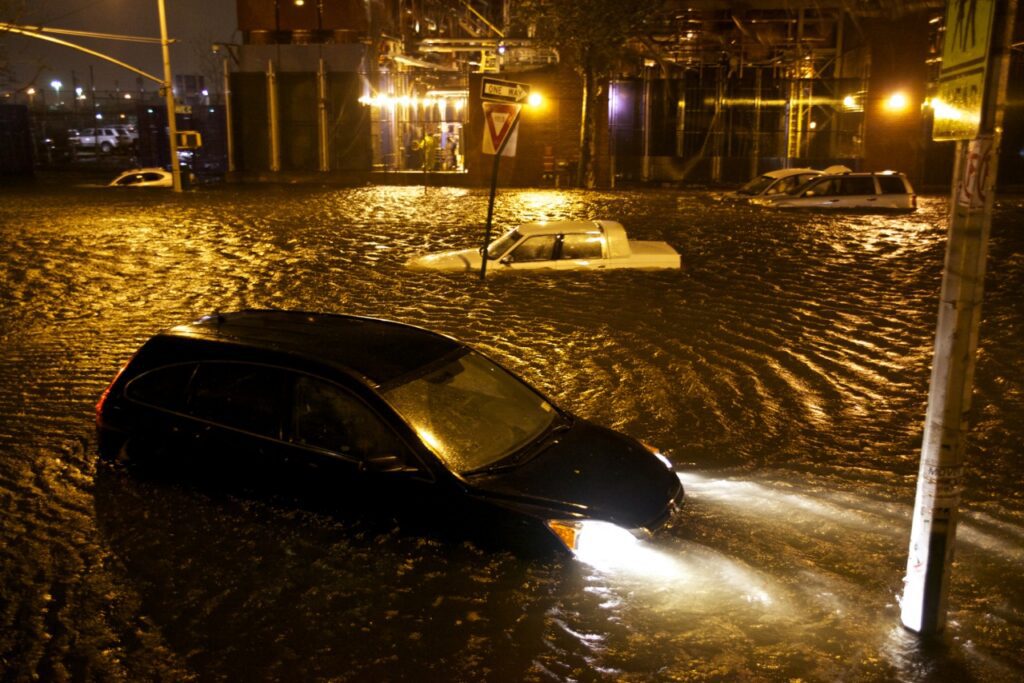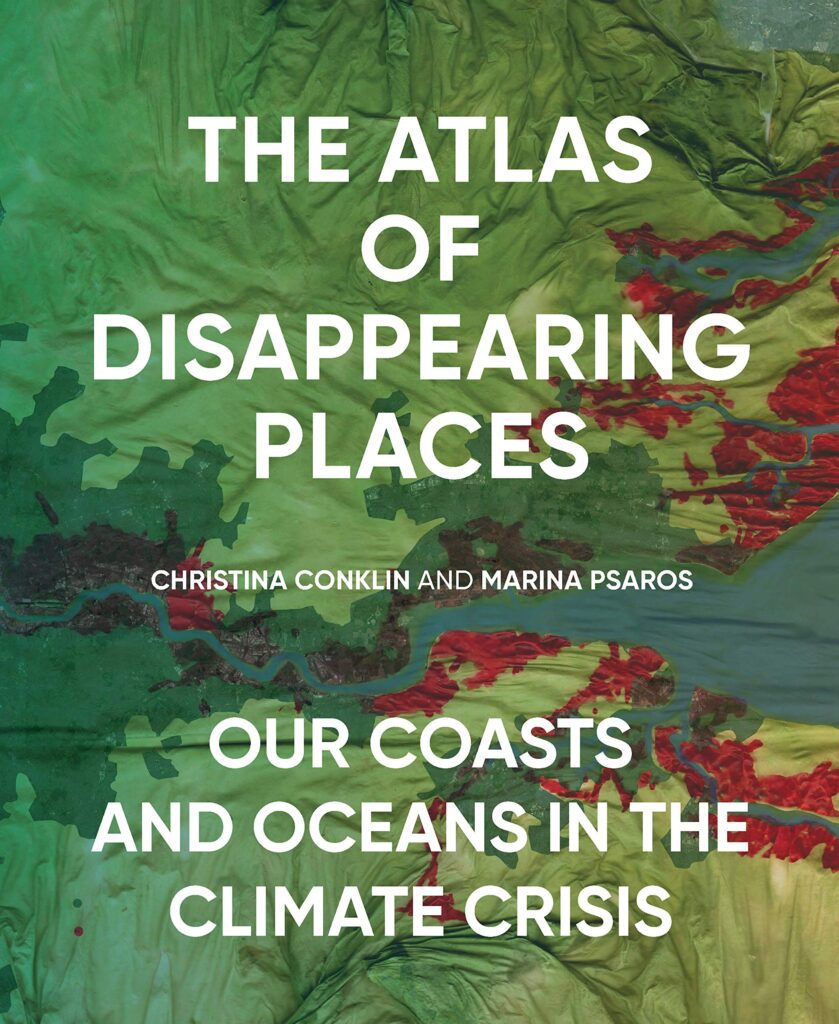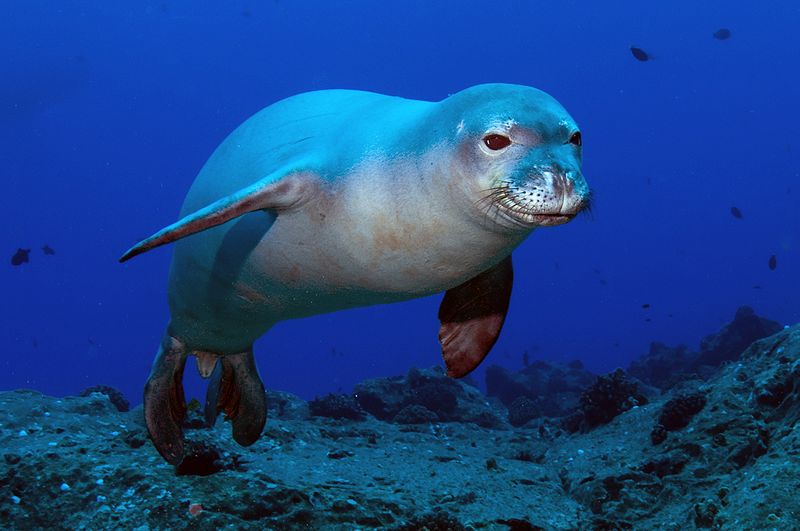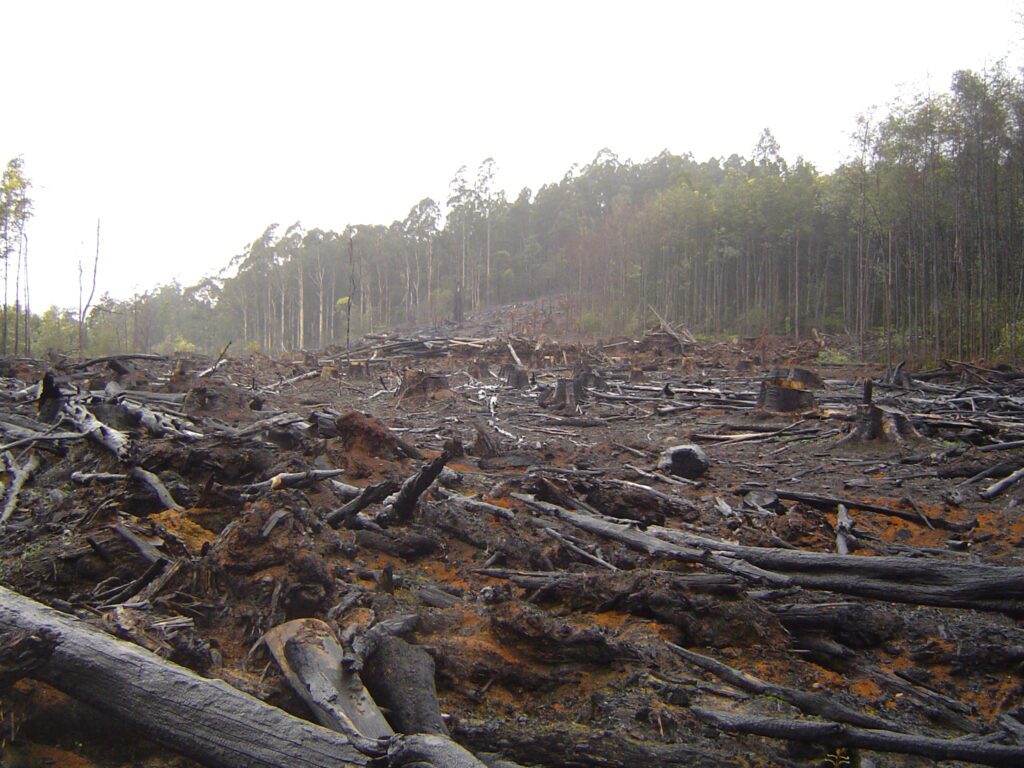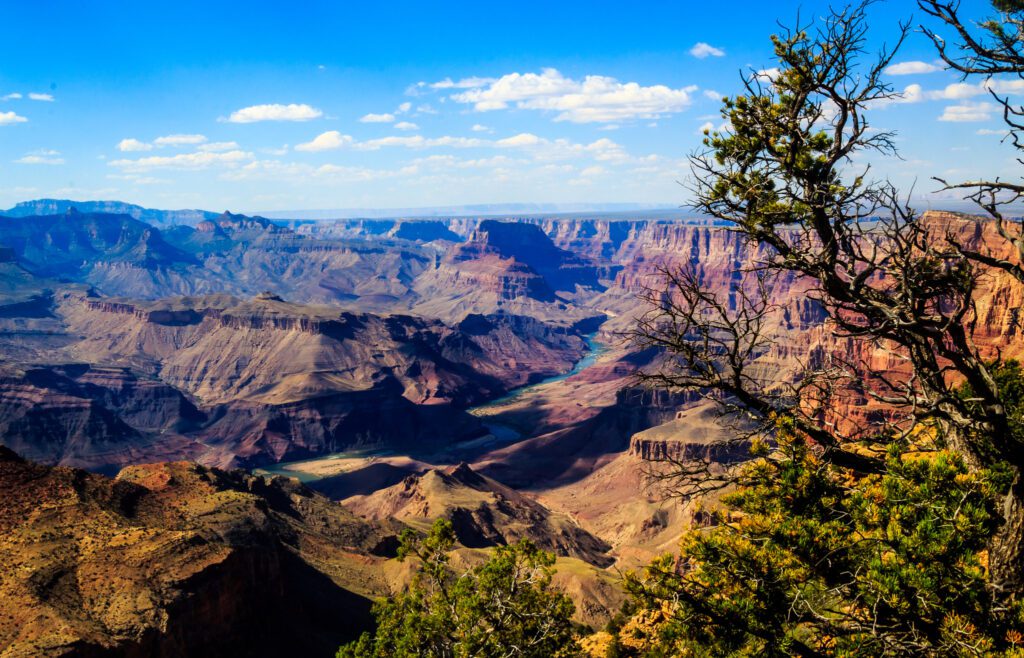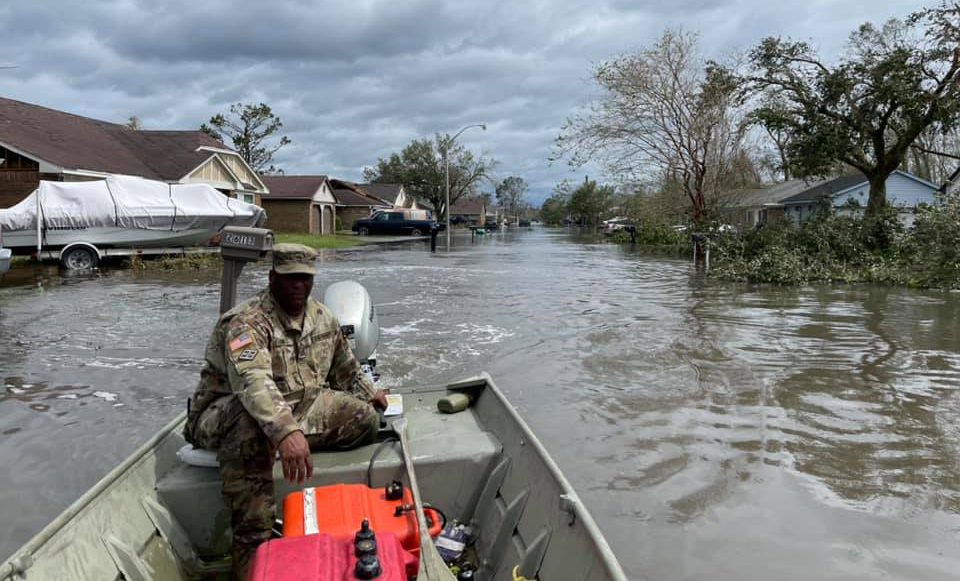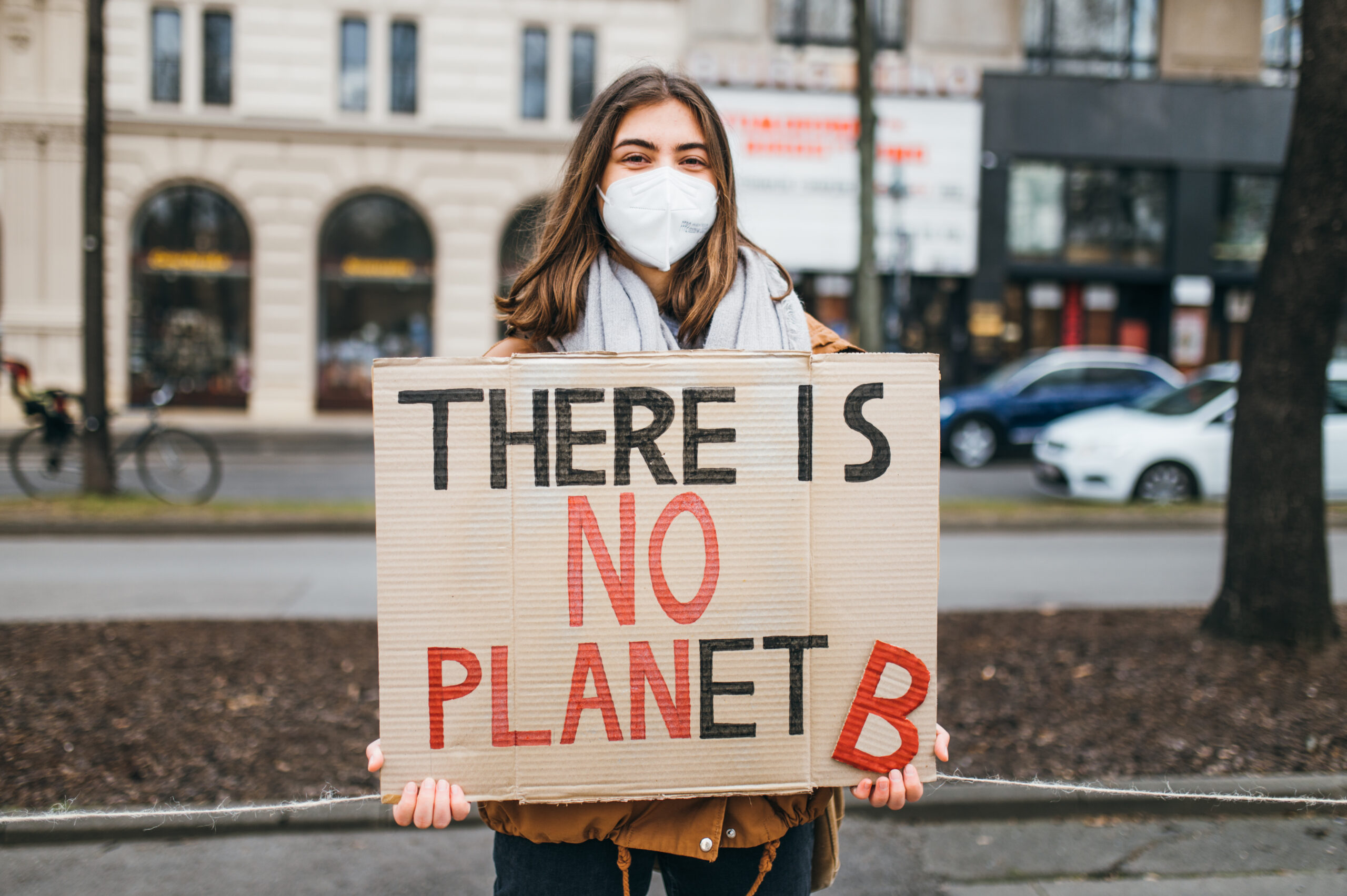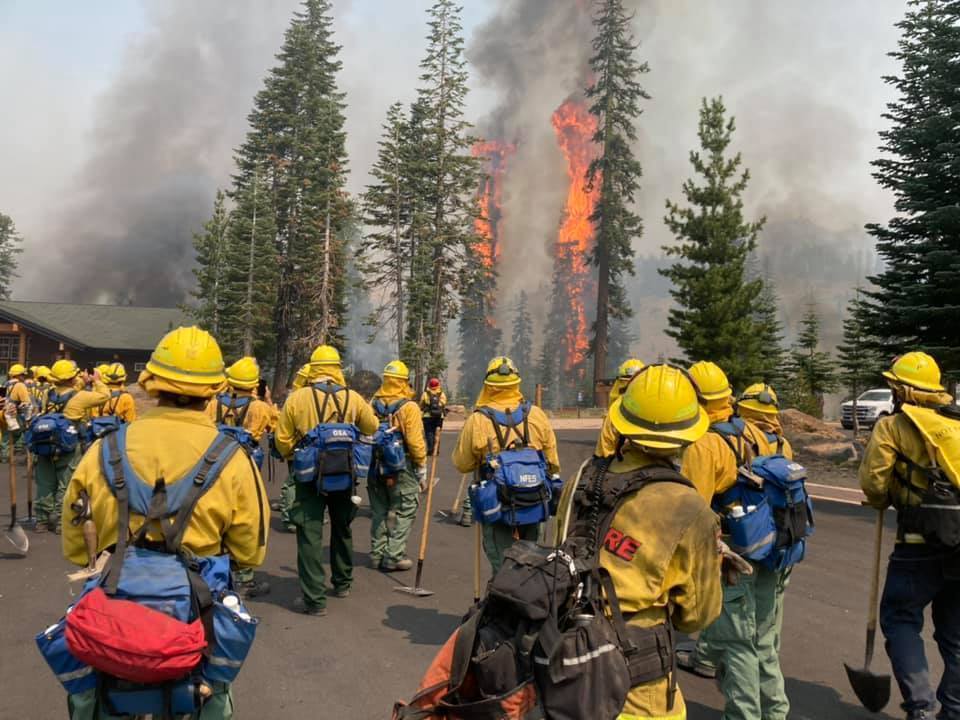


Managing solar radiation through technology is possible, but there are ethical and political concerns.
By Daniel Ross, Independent Media Institute
8 min read
Desperate times call for desperate measures, as the saying goes. As scientists, policymakers and politicians keep one increasingly startled eye on climate change’s ticking clock and the other on the ongoing, upwardly mobile trend in greenhouse gas emissions, it’s no wonder possible solutions that have been long dismissed as fringe slices of science fiction are making their way into the mainstream.
Enter center stage geoengineering, a hitherto black sheep of the fight against global warming.
Geoengineering is a broadly encompassing term with a few close etymological cousins—namely climate engineering and climate change mitigation—along with a sizable stable of associated technologies. Some of them, like afforestation and ocean iron fertilization, fall under the umbrella of carbon dioxide removal (CDR) in that they seek to draw down carbon dioxide from the atmosphere. But these are techniques that would in all likelihood shift the climate change needle relatively slowly.
In comparison, technologies under the rubric of solar radiation management (SRM) are expected to work on a much faster timescale, and as a consequence, generate arguably the greater buzz. Solar engineering is the idea that humankind artificially limits how much sunlight and heat are permitted in the atmosphere, and includes the thinning of high-level cirrus clouds to help infrared rays more easily escape upward, along with the brightening of low-level marine clouds to help reflect sunlight back into space.
The one SRM practice with perhaps the greatest political currency concerns the spraying of aerosols like sulfur dioxide into the upper layer of the atmosphere to act as a barrier against sunlight. These technologies take their inspiration from volcanic eruptions—like Pinatubo 20 years ago—which belch huge quantities of sulfur dioxide into the stratosphere. Once airborne, the aerosol turns into a cloud of sulfuric acid that reflects inbound solar energy, in the process cooling the planet.
The idea that such actions could be imitated in a controlled manner has bounced around for a while. For example, the right-wing think tank the American Enterprise Institute embarked upon a research program into SRM technologies back in 2008. One year later, in 2009, the UK’s Royal Society released a report recommending that CDR and SRM techniques be considered possible avenues to address climate change, but only after extensive research. Recently, however, talk around geoengineering—and SRM in particular—appears to have shifted gears, even if some of it substantively sounds familiar.
In March 2021, the National Academies of Sciences, Engineering and Medicine (NASEM) released a report that advocated a multinational research program into solar geoengineering. Researchers from Harvard are seeking the green light for a potentially groundbreaking experiment to release an aerosol made from calcium carbonate into the stratosphere to see how it behaves. The project’s first test flight, in Sweden, was penciled in for this June, but has been postponed until next year as a result of pushback from local Indigenous groups. In April, Rolling Stone curated a debate on solar engineering which included Harvard’s David Keith, who spearheads the geoengineering project. During the debate, Keith described the process of releasing aerosols into the stratosphere as “technically pretty easy.”
Easy it may be. But with august political institutions continuing to weigh in on solar engineering as a legitimate solution to global warming, perhaps the most salient question is this: Should such techniques ever be deployed?
Practical and Ethical Concerns
At the heart of the debate is the fact that currently there’s simply not nearly enough known about the vast and complex set of overlapping consequences, akin to falling dominoes, that solar engineering might trigger—a yawning data gap resulting from the meager amounts of funding put toward such research thus far. “There’s just not much money going into this [research, relative] to the looming possibility of actually needing to use it to avoid catastrophic climate change,” said Dane Scott, director of the Center for Ethics at the University of Montana.
And while major climate models show that solar engineering certainly has the potential to reduce key climate hazards like atmospheric temperature increases, changing water accessibility and rising sea levels, with limited data available through practical field application, computer simulations of solar engineering proposals remain for the most part stalled at the conceptual stage.
With that in mind, it’s no wonder many experts mirror calls by the likes of NASEM for major investments in solar engineering research. But if this research is to be conducted, these same individuals warn, it needs to be approached openly and transparently with engagement from all four corners of the global community, both developed and developing nations alike.
“It would be irresponsible not to do vigorous research on it,” said Scott, about the use of stratospheric aerosols in particular. “But it would just be awful if we were to do this research in secret since it affects everybody in the world.”
This brings us to the slippery ethical conundrums that SRM technologies pose, with all sorts of societal, political and environmental considerations that can often seem hard to digest. One useful way to view this debate is through the lens of moral hazard, which refers to the idea that the more protected we are from the consequences of our behavior, the riskier our behavior becomes.
In terms of SRM technologies, therefore, one fear is that any concerted approach to studying their relative viability could offer false hope to political leaders who, in turn, might redirect attention and vital resources away from other climate mitigation efforts, especially those seeking to curb greenhouse gas releases in time to reach to the 2050 “net-zero” emissions goal approved by the Intergovernmental Panel on Climate Change (IPCC). Another fear is that any meaningful deployment of SRM technologies could act as a green light for fossil fuel companies to continue with business as usual, a scenario with all sorts of implications, including health-related impacts associated with exposure to pollutants from fossil fuel usage.
Moral hazard is a “core concern with a lot of different responses to climate change,” said Holly Buck, a postdoctoral research fellow at the Institute of the Environment and Sustainability at the University of California, Los Angeles. “It’s a real and pervasive concern, because we haven’t seen a real commitment to climate action yet.”
Solar engineering deployment also brings significant geopolitical concerns. “You always have to ask about power,” said Duncan McLaren, a research fellow and professor in practice at the Lancaster Environment Center, England. “It’s an unfortunate problem of the liberal Western narrative of how the world works.” In other words, who wields the levers of governance and how will accountability be practiced? These are no small issues to grapple with.
One fear is that a rogue nation or two—or even a billionaire “Greenfinger,” who is “a self-appointed protector of the planet” as law professor David Victor put it more than 10 years ago—could take it upon themselves to tame the sun alone. Who exactly would stop them, and under whose auspices? That leads to issues surrounding unintended consequences, post-deployment. What would happen in the event that a country or a region suffers a period of major drought for which political leaders blame the use of solar engineering? What kind of political mechanisms are in place to deal with such a scenario? Can a country then unilaterally pull the plug on the program?
Then there’s the possibility—though slim—that global actors intentionally weaponize solar engineering against political enemies. “I’ve always been pretty skeptical that [SRM] could be effectively weaponized,” said David Morrow, an academic who works on climate ethics and climate policy. The exception is marine cloud brightening, which could be “deployed regionally,” he added.
At the same time, possible blueprints for governance and enforcement already exist, Morrow explained, pointing to complex structures like the global financial system, the electric grid and GPS satellite tracking systems. “Obviously, all analogies have limits,” Morrow added. “One of the important limits with all the things I’ve just mentioned is that individuals or countries can opt out of those things—at great cost, but they could do it. That’s not true for solar engineering.”
Perhaps one of the most potent obstacles that proponents of SRM technologies face is the court of public opinion. Polls show the U.S. public is ambivalent, at best, toward geoengineering as a possible fix to the climate crisis. This hesitation may not be surprising within Western culture’s dire warnings of the consequences of humanity’s hubris, epitomized by the popular canonical ancient Greek tale of Icarus, whose waxen wings melted after he flew too near the sun. More recently, the post-apocalyptic world of the TV series “Snowpiercer” introduced us to a fictional frozen hellscape brought about by botched efforts by humans to block the sun.
According to Alan Robock, a distinguished professor in the Department of Environmental Sciences at Rutgers University-New Brunswick, public reticence could prompt the kind of action necessary to ensure that global warming is reversed without resorting to solar engineering.
“If you tell someone in the public, ‘Here’s the deal, we’re going to fly an airplane over your daughter’s school, we’re going to spray sulfuric acid in the atmosphere, and that’s going to solve the global warming problem,’ they might reply, ‘Really, you’re thinking about something that crazy? Well, maybe I should worry more about global warming than I did before.’ So, it might actually work in the opposite direction,” Robock said.
###
Daniel Ross is a journalist whose work has appeared in Truthout, the Guardian, FairWarning, Newsweek, YES! Magazine, Salon, AlterNet, Vice and a number of other publications. He is based in Los Angeles. Follow him on Twitter: @1danross.
Take action…
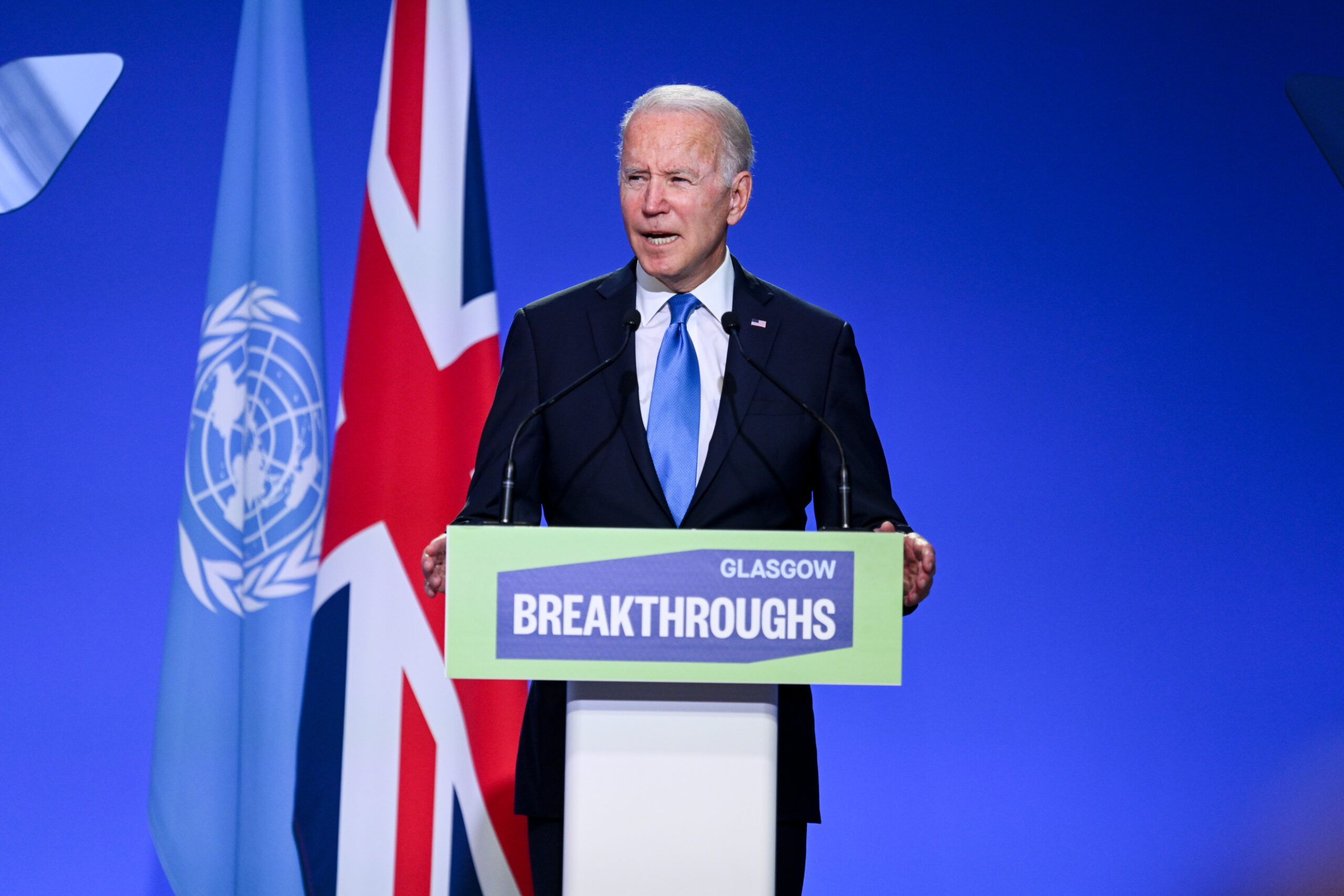
Build Back Fossil Free to President Biden: “Our country is in crisis. In the midst of a pandemic and climate catastrophe, our communities turned out in record numbers to elect you. Now it’s time to fulfill your promises to end the era of fossil fuel production, protect communities reeling from the climate and COVID-19 crises, and #BuildBackFossilFree… Stop approving the fossil fuel projects fueling climate chaos. Protect the Black, Indigenous, Brown, AAPI and working-class communities that are disproportionately harmed… Declare a climate emergency. Repair the harm caused by environmental racism and Build Back Fossil Free, delivering jobs, justice, and clean energy for all.”
Sign the petition urging President Biden to take executive action to address to the climate crisis, including declaring a climate emergency.
Cause for concern…
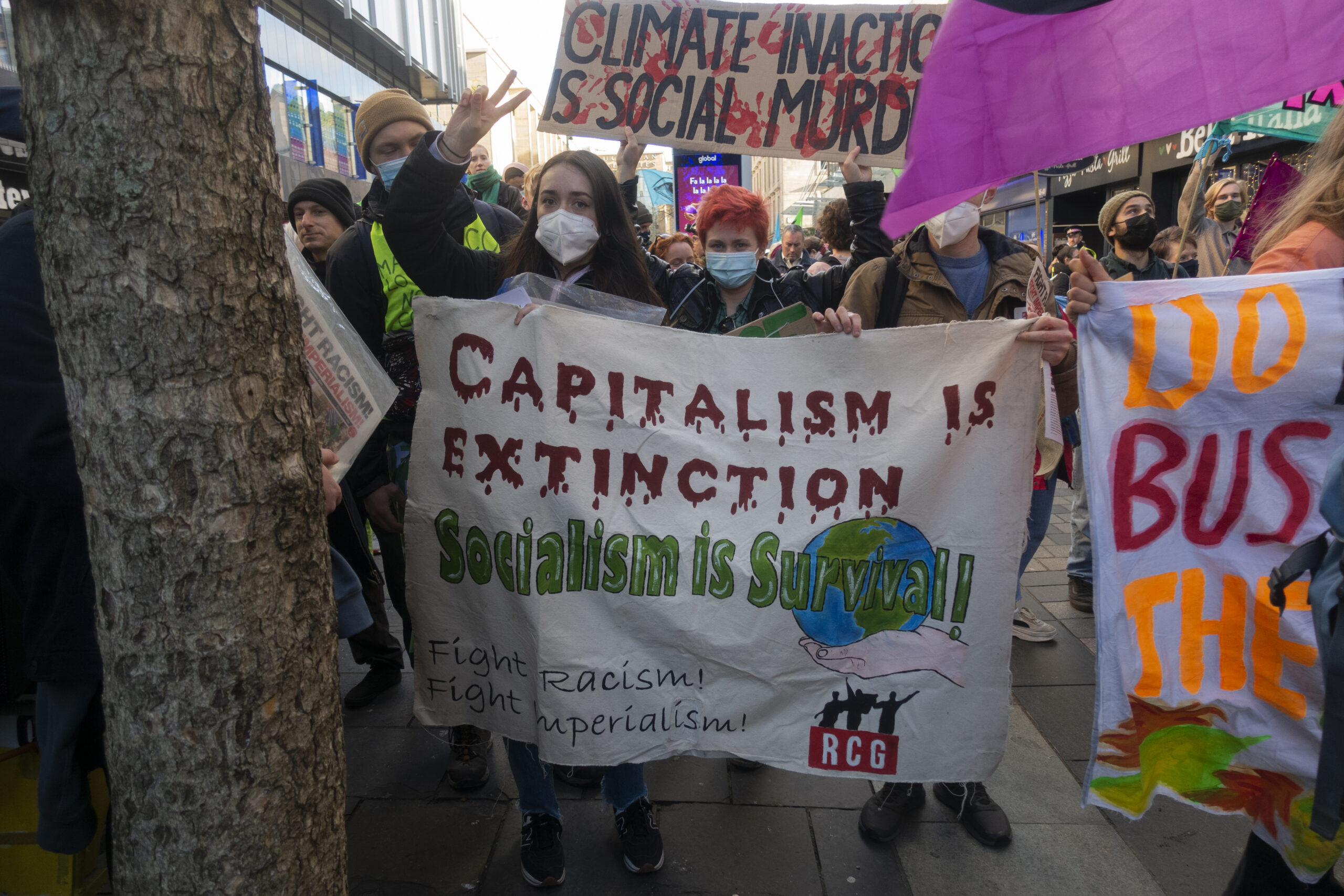
“Across the world, many countries underreport their greenhouse gas emissions in their reports to the United Nations, a Washington Post investigation has found. An examination of 196 country reports reveals a giant gap between what nations declare their emissions to be versus the greenhouse gases they are sending into the atmosphere,” report Chris Mooney, Juliet Eilperin, Desmond Butler, John Muyskens, Anu Narayanswamy and Naema Ahmed for the Washington Post.
- Nations’ climate pledges built on flawed data, investigation finds (Chris Mooney, Juliet Eilperin, Desmond Butler, John Muyskens, Anu Narayanswamy and Naema Ahmed, Washington Post)
- Climate change may impact corn and wheat crops as early as 2030 (NASA)
- Canadian Prime Minister Justin Trudeau promised to cap emissions, but oil companies have other plans (Ainslie Cruickshank, Narwhal)
- Koalas are dying from chlamydia, and climate change is making it worse (Ben Westcott, CNN)
Round of applause…

“The $47 billion in the bill designated for climate resilience is intended to help communities prepare for the new age of extreme fires, floods, storms and droughts that scientists say are worsened by human-caused climate change,” report Coral Davenport and Christopher Flavelle for the New York Times. “The money is the most explicit signal yet from the federal government that the economic damages of a warming planet have already arrived. Its approval by Congress with bipartisan support reflects an implicit acknowledgment of that fact by at least some Republicans, even though many of the party’s leaders still question or deny the established science of human-caused climate change.”
- Infrastructure bill makes first major U.S. investment in climate resilience (Coral Davenport and Christopher Flavelle, New York Times)
- U.S. agrees to end fossil fuel financing abroad (Sara Schonhardt, E&E News)
- COP26 pledges could limit warming to 1.8°—only if commitments are delivered fully (Jillian Ambrose, Fiona Harvey and Jonathan Watts, Guardian)
- Restoring Mexico’s mangroves can shield shores, store carbon (María Verza, Christina Larson and Victoria Milko, Associated Press)
ICYMI…

“An Associated Press (AP) investigation has revealed that Ferrero, one of two makers of the popular Girl Scout cookies, is sourcing their palm oil, an ingredient in the cookies, to plantations in Indonesia and Malaysia where tens of thousands of children are estimated to work alongside their parents. The investigation bolsters a campaign launched last year by Olivia Chaffin, a 14-year-old girl scout of the Southern Appalachian council, urging Sylvia Acevedo, CEO of the Girl Scouts of the USA, to remove palm oil from Girl Scout cookies.”
—Reynard Loki, “Investigation Links Child Labor and Human Rights Abuses to Palm Oil Found in Girl Scout Cookies” (Independent Media Institute, January 19, 2021)
Parting thought…

Editor’s note: We’ve been following John Oberg’s inspiring work as an animal rights advocate for many years. When I invited him to write a piece for Earth | Food | Life, he thought to tell the story about how his mother put him “on a path to living with compassion.” As we approach the season of “thanks—and giving,” it’s worth a read—and a share.
Earth | Food | Life (EFL) explores the critical and often interconnected issues facing the climate/environment, food/agriculture and nature/animal rights, and champions action; specifically, how responsible citizens, voters and consumers can help put society on an ethical path of sustainability that respects the rights of all species who call this planet home. EFL emphasizes the idea that everything is connected, so every decision matters.
Click here to support the work of EFL and the Independent Media Institute.
Questions, comments, suggestions, submissions? Contact EFL editor Reynard Loki at [email protected]. Follow EFL on Twitter @EarthFoodLife.
